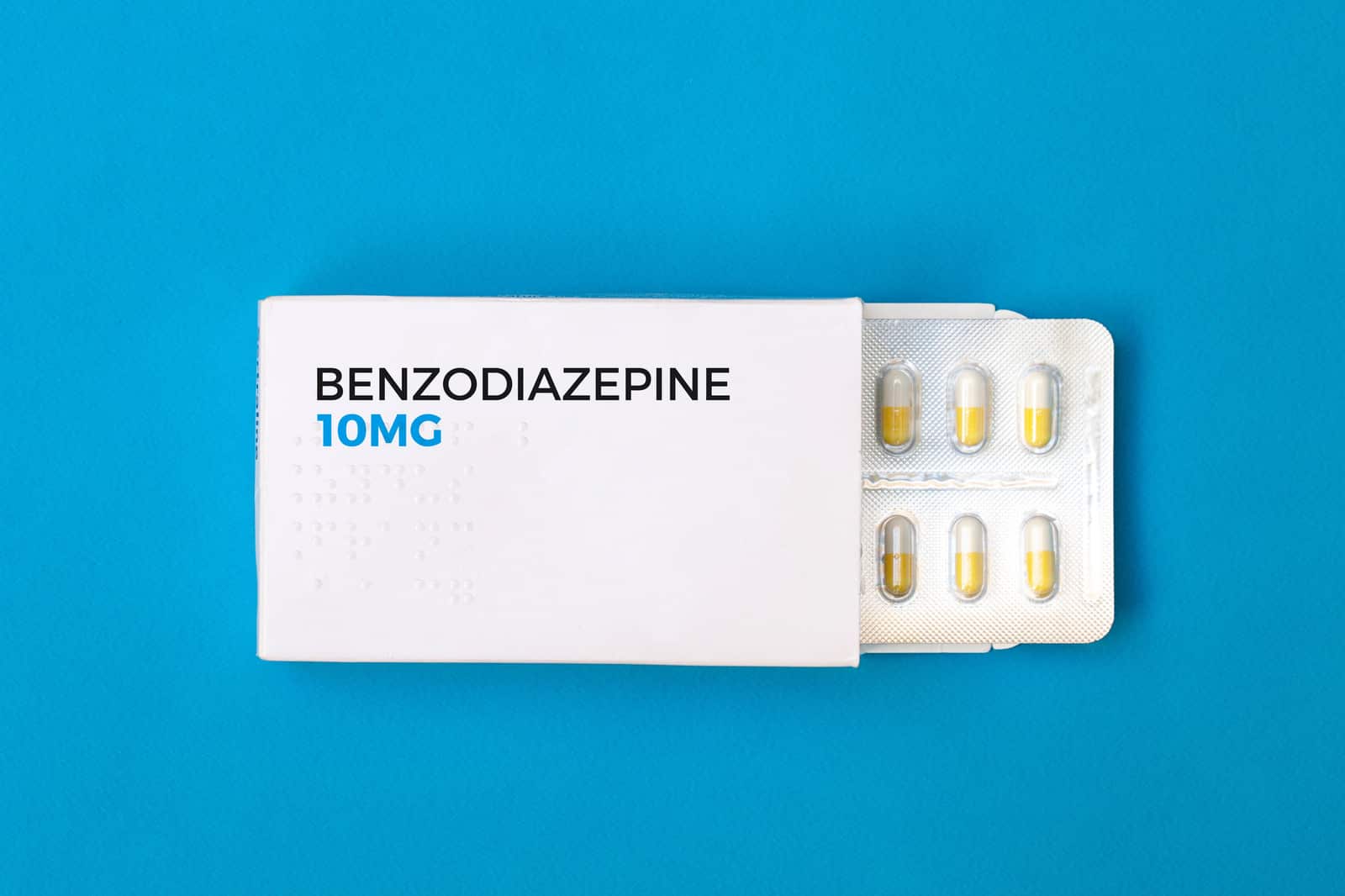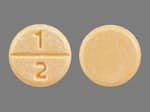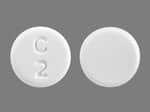Klonopin® Overview
Klonopin® is an anticonvulsant drug used to treat seizures and panic disorder. It works by enhancing neurotransmitter activity. It’s thought to calm the brain by reducing its sensitivity to stimulation.
What is Klonopin®?
Clonazepam, the generic name for Klonopin®, is a medication prescribed by doctors for seizure and panic disorders. Due to its potential for misuse and dependence, it is a Schedule IV controlled substance. It is FDA-approved for use by children and adults.
Klonopin® comes as both an oral tablet and an oral dissolving tablet. It’s available in the following strengths: 0.5 milligrams (mg), 1.0 mg, and 2.0 mg.

Is Klonopin® A Benzo?
Klonopin® is classified as a benzodiazepine, also known as a benzo. Benzos promote the activity of gamma-aminobutyric acid (GABA), lessening anxiety and stress reactions. In turn, this results in fewer panic attacks and seizures in those who take it.
Is Klonopin® Safe To Take?
Klonopin® is a safe and effective medication when taken as directed by a doctor. Side effects range from mild to serious. It’s important not to take Klonopin® without a prescription from a medical professional.
Klonopin® can be harmful when combined with other substances, including alcohol. Tell your doctor and pharmacist if you use any other over-the-counter, prescription, or recreational drugs.
Prolonged use of Klonopin® can increase the risk of physical dependence and abuse. As such, natural alternatives to Klonopin® should be considered when possible.
Klonopin® Uses
Klonopin® is FDA-approved for the treatment of certain seizure and panic disorders. When used as directed, it can reduce the frequency of panic attacks and seizures.[1]
Klonopin® For Pain
Klonopin® for pain is an off-label use, meaning it is not technically approved for the treatment of pain. Klonopin® slows stress responses in the CNS, producing a calming effect. Thus it sometimes reduces pain.
Klonopin® For Depression
It is generally not recommended to take Klonopin® for depression. For individuals with depression, their symptoms may become worse while taking Klonopin®.
It is important to call the doctor immediately if you experience worsening symptoms of depression or suicidal thoughts while taking Klonopin®. Certain antidepressants may increase your risk of CNS and breathing problems when taken with Klonopin®.
Klonopin® For Anxiety
Klonopin® is not specifically labeled to treat generalized anxiety. However, some doctors prescribe Klonopin® for anxiety that is caused by the anticipation of a panic attack.
The longevity of Klonopin® as a treatment for anxiety varies based on a number of factors, including symptom severity. Dosage may also differ, it’s important to talk to your doctor to learn more.
Klonopin® For Panic Attacks
Doctors often prescribe Klonopin® for panic attacks in adults with or without agoraphobia. Panic disorder is a type of anxiety disorder that is characterized by frequent panic attacks.
These panic attacks make you suddenly feel intense fear that often manifests in physical symptoms that can include:
- Chest discomfort
- Rapid heart rate
- Shaking or trembling
- Excessive sweating
- Difficulty breathing
- Chills, or hot flashes
Klonopin® has proven to be an effective treatment for panic disorder in adults when taken as prescribed.
Klonopin® For Seizures
Klonopin® is an FDA-approved medication used to treat certain seizure disorders, also known as epilepsy. Doctors prescribe Klonopin® for seizures in adults and children.
Seizures result from an interruption in the brain’s normal electrical activity. Symptoms vary widely based on the type of seizure and are sometimes difficult to detect. Klonopin® may help reduce the frequency of atonic, myoclonic, and absence seizures. It is important to take the medication exactly as directed.
Klonopin® For OCD
Taking Klonopin® for OCD is not common, but some individuals have reported relief from their OCD-associated anxiety from the drug.
OCD is a psychiatric disorder that includes repetitive, intrusive thoughts and fears causing unwanted behaviors. This causes distress and anxiety in affected individuals.
Klonopin® For PTSD
Using Klonopin® for PTSD is generally not recommended. While it can be effective in easing PTSD-related episodes of panic and anxiety, it also hinders recovery. Most professionals encourage alternative treatments for PTSD, including therapy.
PTSD is a mental health condition developed after a traumatic event. Similar to panic disorder, it is characterized by intrusive thoughts. However, it differs because it is directly associated with a single or series of specific events.
Klonopin® For Bipolar Disorder
Klonopin® is used as an off-label treatment for bipolar disorder. Clonazepam has been shown to improve bipolar symptoms in controlled studies and case reports. Klonopin® for bipolar disorder is growing in popularity as an alternative to neuroleptics.
Bipolar disorder causes abrupt changes in mood and behavior. You may experience high mood called mania, followed by a low state called depression.
Klonopin® For Flying
Flying is an anxiety-inducing activity for many people. Benzo use is relatively common for travelers experiencing panic episodes before a flight. However, Klonopin® for flying is typically not prescribed due to its longer onset time.
The effects of Klonopin® take about 1 to 4 hours to be noticeable. It is one of the more long-lasting benzos (6 to 12 hours). This is why it’s usually used on a regular basis to treat ongoing anxiety disorders.
Klonopin® For Headache
Doctors rarely prescribe Klonopin® for headaches. In fact, headaches are a withdrawal symptom if you stop taking Klonopin® suddenly. However, if your headaches are directly caused by stress and anxiety, it may indirectly help.
Klonopin® For Sleep and Insomnia
Klonopin® is not approved for the treatment of insomnia and other sleep issues. However, it’s a common off-label use of the drug. When you use Klonopin® for insomnia, you may continue to feel tired the next day since it stays in your body for a long time.
One of the major side effects of Klonopin® is drowsiness. Therefore using Klonopin® for sleep is growing in popularity. Nevertheless, it’s important to use Klonopin® as prescribed by your doctor.
Klonopin® Dosage
 |
 |
 |
 |
| 0.25mg | 0.5mg | 1mg` | 2mg |
| Prescribed for: panic disorder in adults, seizure disorders in children | Prescribed for: panic disorders in adults, seizure disorders in children & adults | Prescribed for: panic disorders in adults, seizure disorders in children & adults | Prescribed for: panic disorders in adults, seizure disorders in children & adults |
Klonopin® Withdrawal Symptoms
Klonopin® is a highly potent substance that leads to dependence.[2] Withdrawal symptoms from Klonopin® range from mild to serious and may include:
- Body tremors and muscle spasms
- Impaired vision
- Anxiety
- Severe fatigue
- Nausea, vomiting, reduced appetite, and diarrhea
- Light and sound sensitivity
- Insomnia
- Headaches
- Elevated blood pressure and/or heart rate
- Panic attacks
- Seizures
- Memory problems
- Unfamiliar sensations in your skin such as numbness or tingling
- Ringing in your ears
How To Detox From Klonopin®
Klonopin® has a black box warning, the most serious warning issued by the FDA. Black box warnings caution medical personnel and consumers of potentially dangerous drug effects.
There is a considerable risk of physical dependence. In as little as 3 to 6 months, the drug has a high likelihood of being misused. Once a dependence has been established, weaning off the drug can be difficult.
Withdrawal must be avoided by gradually tapering off your Klonopin® dosage. It’s extremely important to seek medical help when experiencing withdrawal due to potential life-threatening effects.
Klonopin® Detox Timeline
It’s strongly advised not to stop taking Klonopin® suddenly. Withdrawal from Klonopin® typically occurs in three phases:
Phase 1: Acute withdrawal – symptoms typically start 1 to 3 days after you stop taking it and may include:
- Body tremors and muscle spasms
- Impaired vision
- Anxiety
- Severe fatigue
- Nausea, vomiting, reduced appetite, and diarrhea
- Light and sound sensitivity
- Insomnia
- Headaches
- Elevated blood pressure and/or heart rate
- Panic attacks
- Seizures
Phase 2: Protracted withdrawal – symptoms can last for several weeks or months and may include:
- Memory problems
- Anxiety
- Mood swings and depression
- Unfamiliar sensations in your skin such as numbness or tingling
- Ringing in your ears
Klonopin® Overdose Symptoms & OD Treatment
Taking Klonopin® in a way other than prescribed can lead to life-threatening side effects. The symptoms of Klonopin® overdose include:
- Extreme drowsiness
- Confusion or disorientation
- Slowed reflex time
- Decreased blood pressure
- Coma
If you or someone around you is experiencing these symptoms, seek emergency medical help immediately. Klonopin® overdoses can be easily fatal if not treated quickly.
Klonopin® and Alcohol
It’s crucial to avoid alcohol consumption while taking Klonopin®. Combining the two increases your risk of serious side effects or death. Because alcohol also acts as a sedative, it can interact with Klonopin® to heighten the effects seen from the drug.
Risks include slow, shallow breathing, extreme sleepiness, coma, and death. If you currently consume alcohol or plan to while taking Klonopin®, you should talk to your doctor.
Klonopin® vs. Xanax®
If you’ve discussed benzos as a treatment option with your doctor, they may have mentioned both Klonopin® and Xanax®. These are central nervous system depressants that affect gamma-aminobutyric acid (GABA) in the brain.
Both drugs treat anxiety disorders, including panic disorders, in adults. Klonopin® also treats seizures in adults and children. The effects of Klonopin® last longer, usually a few days, as compared to Xanax®, which only remains effective for a few hours.
Klonopin® is taken on a more regular basis, while Xanax® is typically used as needed.
| Side Effects | Klonopin® | Xanax® |
| Drowsiness | X | X |
| Sleep issues | X | X |
| Changes in appetite | X | X |
| Nausea | X | X |
| Irritability | X | |
| Headaches | X | X |
| Slurred speech | ||
| Digestive issues | X | |
| Trouble focusing | X | X |
Is Klonopin® Addictive?
Klonopin® has a high potential for misuse, as is common for benzodiazepines. Taking it even as prescribed can lead to physical dependence quickly. Do not stop taking Klonopin® suddenly as the risk for serious withdrawal symptoms heightens. Withdrawal symptoms can be life-threatening and lead to further misuse or overdose.

Klonopin® Addiction Treatment & Rehab Options
Recent studies show benzodiazepine addiction is on the rise in the United States.[3] The personal lives of those who fall victim to addiction can greatly suffer. Fortunately, there is effective Klonopin® addiction treatment available.
If you or someone you know has become physically dependent on the drug, it’s important to seek out Klonopin® rehab as soon as possible.
Enlisting the help of professionals experienced in Klonopin® addiction is recommended. Withdrawal symptoms from this drug can be life-threatening. This is why medical assistance during the detox process is crucial.
Klonopin® addiction treatment is complex in that it requires both physical and mental support through the detox process. The first step to recovery is helping the client physically wean off of Klonopin® under the careful supervision of professionals.
The second step is addressing the mental dependency on the drug. It’s important to pinpoint the thoughts and behaviors that led to the misuse of Klonopin®. Then, a therapist is able to help the client recognize the underlying causes of drug abuse.
From there, the client is able to take an active role in developing stronger coping skills. Remaining stuck in Klonopin® addiction is not the only option. Rehabilitation is possible with the help of professionals who are invested in their client’s recovery.
Klonopin® FAQs
It takes about 1 to 4 hours for the effects of Klonopin® to be felt. It is one of the longer-lasting benzos, remaining noticeable for anywhere from 6 to 12 hours.
Clonazepam® has a high risk of misuse, and you may experience serious, potentially life-threatening side effects during withdrawal. Additionally, there are important implications if you have accompanying conditions such as glaucoma and liver disease.
You should always talk to your doctor about all medication and supplements you take before starting clonazepam. This drug has known interactions with:
- Other benzodiazepines
- Opioids
- Antifungal drugs
- Sedatives
- Antidepressants
- Stimulant drugs
- Quetiapine
- Hydroxyzine
- Haloperidol
- Clonidine
Recover From Klonopin® Addiction
We understand Klonopin® addiction has detrimental effects for you and your loved ones. At Gallus, there is dignity in healing. Reach out to us today if you or someone you know is struggling with Klonopin® addiction.
